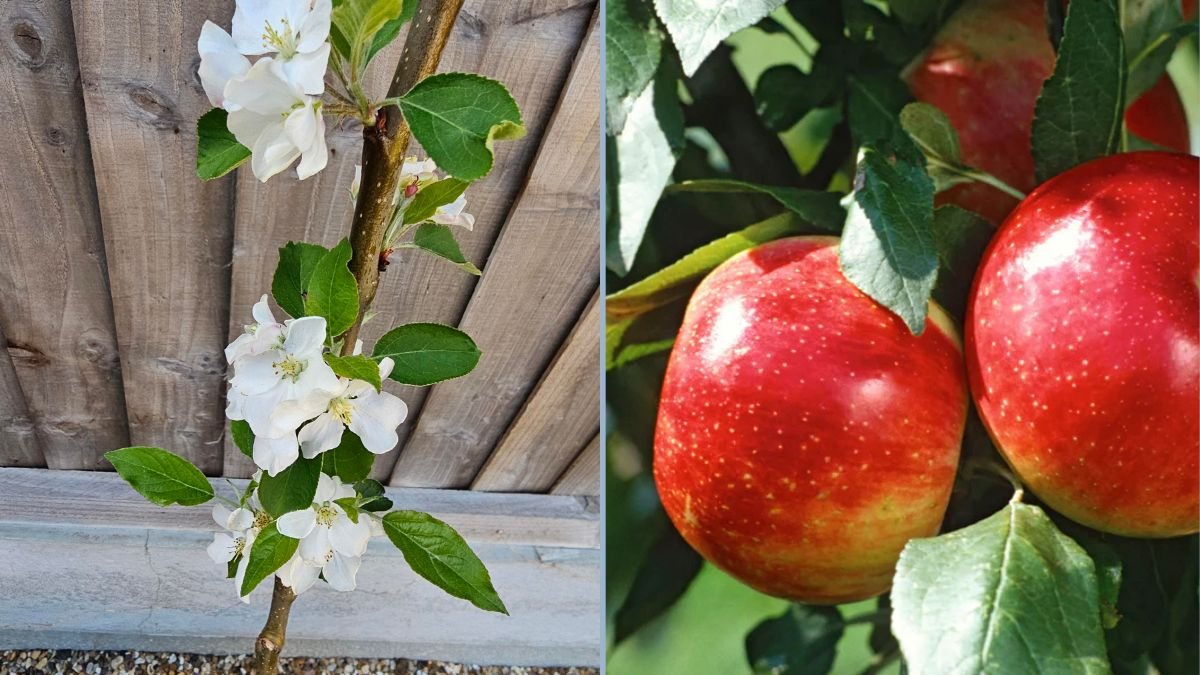Watching a young Cortland apple tree in bloom is a magical moment for any gardener. The delicate white and pink blossoms not only signal the start of spring but also the promise of delicious, crisp, and juicy apples in the months to come. Cortland apples are beloved for their sweet-tart flavor, firm texture, and versatility, making them a fantastic addition to any backyard orchard or garden.
In this guide, we’ll explore everything you need to know about growing, caring for, and nurturing a young Cortland apple tree in bloom, from planting and pruning to pollination and harvesting.
Introduction to Cortland Apples
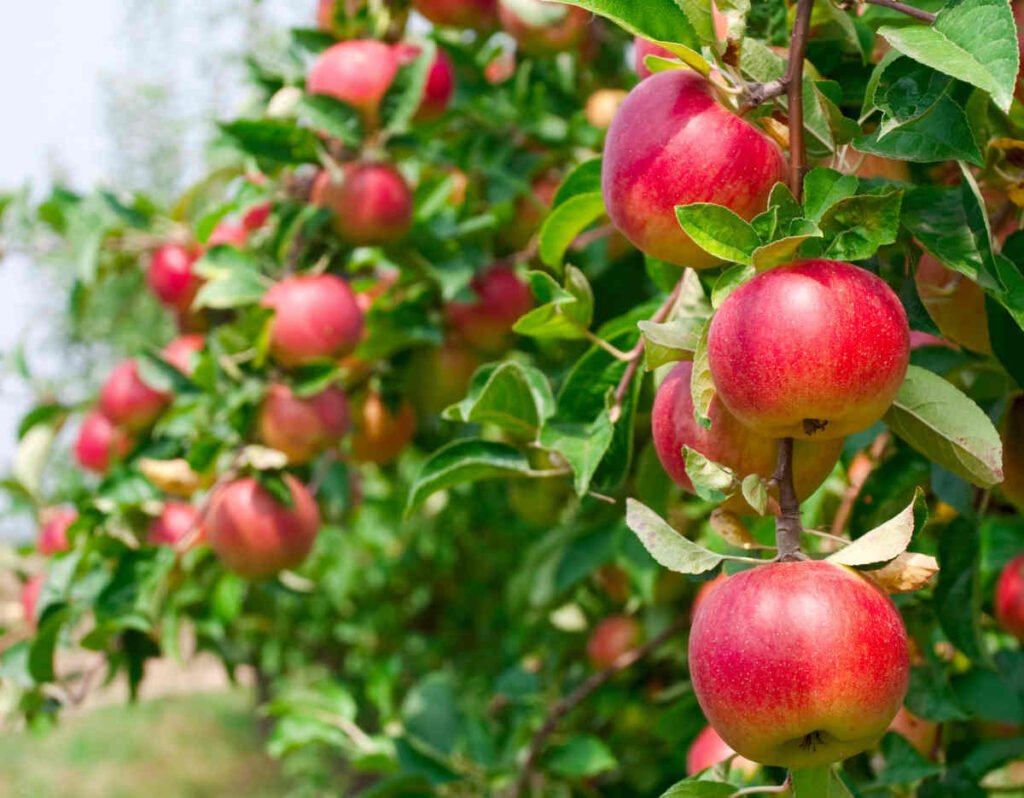
Cortland apples are a classic American variety, first developed in New York in the late 19th century. They are a cross between McIntosh and Ben Davis, combining the best traits of both parent varieties:
- From McIntosh: Sweetness, aromatic flavor, and juiciness.
- From Ben Davis: Firm texture, resistance to bruising, and storage capability.
Cortland apples are prized for:
- Flavor: Sweet-tart balance ideal for fresh eating, pies, and sauces.
- Texture: Crisp and juicy, retaining shape in cooking.
- Appearance: Bright red skin with occasional green undertones.
- Versatility: Excellent for salads, desserts, and cider.
A young Cortland apple tree in bloom represents the first step toward years of fruitful harvests, making it a joy for any gardener.
Why Pay Attention During Bloom?
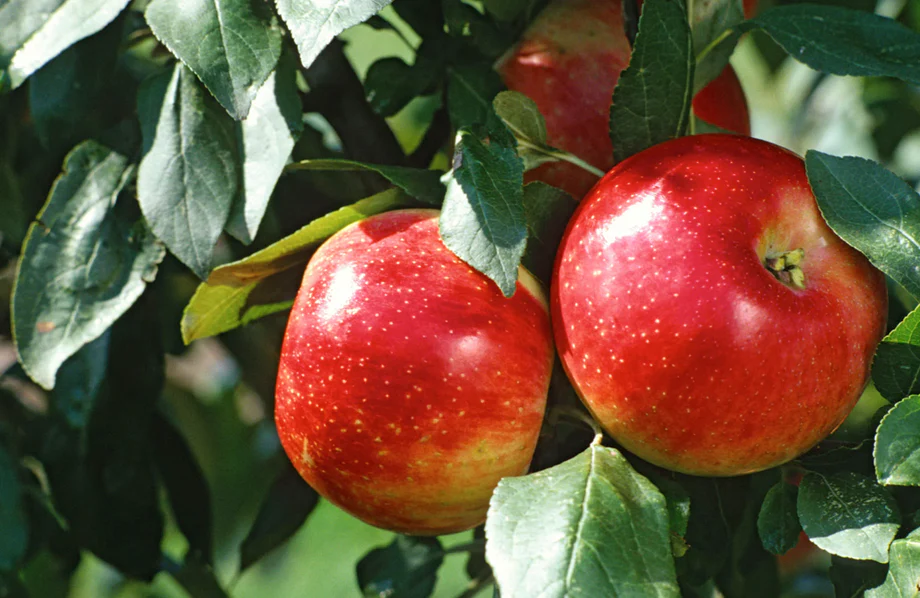
The blooming stage is one of the most critical periods for a young apple tree. Proper care during bloom ensures:
- Better Pollination: Flowering attracts pollinators such as bees, which are essential for fruit set.
- Strong Fruit Development: Healthy blossoms lead to stronger, better-quality apples.
- Disease Prevention: Proper attention reduces the risk of fungal diseases like apple scab or powdery mildew.
Bloom care sets the foundation for a productive apple tree and a successful harvest season.
Selecting and Planting a Cortland Apple Tree
Before your tree reaches bloom, proper planting and early care are crucial.
1. Choosing the Right Tree
- Bare-root trees: Affordable and best planted during dormancy in late winter or early spring.
- Container-grown trees: Easy to plant year-round and experience less transplant shock.
2. Rootstock Selection
Rootstock determines tree size and suitability for your garden:
- Dwarf Rootstock: 8–10 feet tall; ideal for small backyards or container gardens.
- Semi-dwarf Rootstock: 12–15 feet tall; suitable for medium-sized orchards.
- Standard Rootstock: 18–25 feet tall; perfect for larger backyard spaces.
3. Site Selection
- Full sun exposure (6–8 hours daily) for optimal growth.
- Well-draining, loamy soil with pH 6.0–7.0.
- Good air circulation to prevent fungal diseases.
- Proper spacing: 8–10 feet for dwarf, 12–15 feet for semi-dwarf, and 18–25 feet for standard trees.
4. Planting Steps
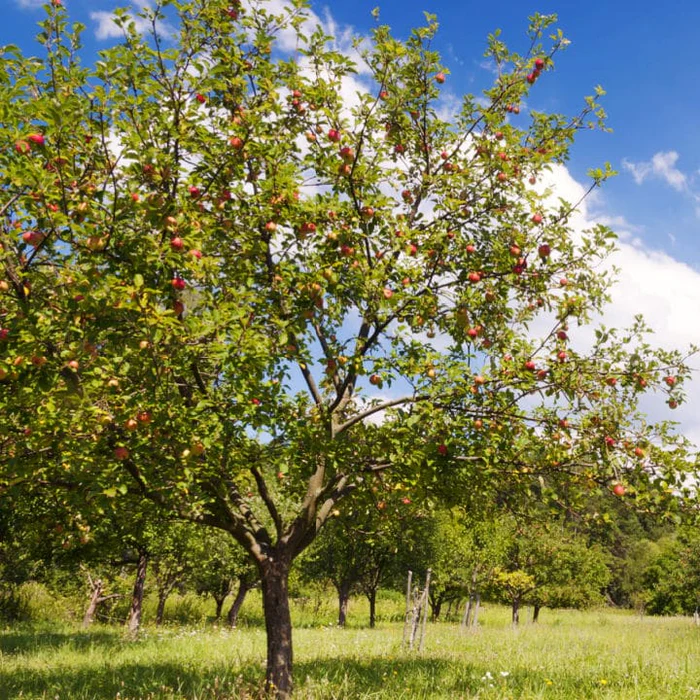
- Dig a hole twice as wide and slightly deeper than the root ball.
- Position the tree with the graft union a few inches above soil level.
- Spread roots evenly and backfill with soil mixed with compost.
- Water thoroughly to settle the soil.
- Mulch 2–3 inches around the base, keeping a few inches from the trunk.
- Stake young trees for support in windy areas.
Caring for a Young Cortland Apple Tree in Bloom

Proper care during the bloom stage maximizes pollination and fruit potential.
1. Watering
- Young trees: Water 2–3 times per week to establish roots.
- Mature trees: Deep watering once a week or more in dry conditions.
- Mulching helps retain soil moisture and regulate temperature.
2. Fertilizing
- Use a balanced fertilizer (10–10–10 NPK) in early spring.
- Avoid over-fertilizing with nitrogen, which encourages leafy growth over blossoms.
3. Pruning
- Prune in late winter or early spring before buds open.
- Remove dead, crossing, or crowded branches to improve airflow and sunlight penetration.
- Summer pruning is optional, focusing on removing vigorous shoots to direct energy to fruiting branches.
Pollination and Flower Care
- Cortland apples are partially self-fertile, meaning a nearby pollinator like McIntosh, Gala, or Fuji improves fruit set.
- Bees are essential during bloom; avoid pesticide use to protect pollinators.
- Remove any diseased flowers promptly to prevent spread.
Pest and Disease Management
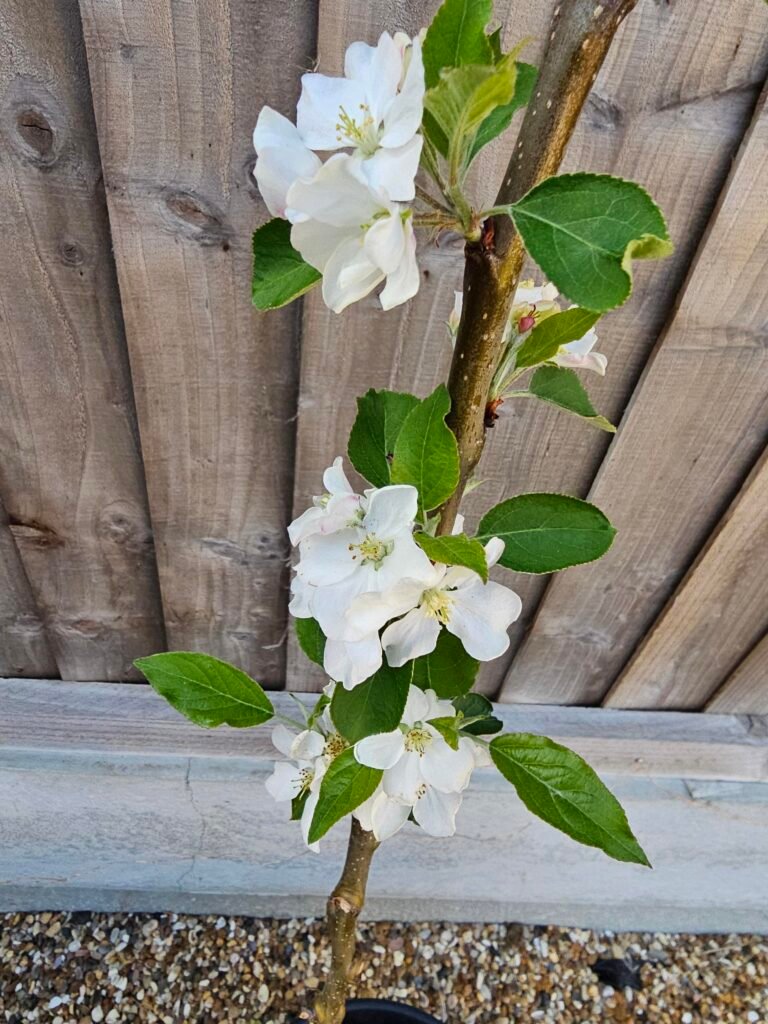
Even during bloom, monitoring for pests and diseases is essential:
Common Pests
- Aphids
- Spider mites
- Codling moths
Common Diseases
- Apple scab
- Powdery mildew
- Fire blight
Prevention Tips:
- Maintain proper spacing for airflow.
- Clean fallen leaves and debris regularly.
- Apply organic sprays like neem oil if needed.
Thinning Fruit After Bloom
Once flowers are pollinated and small fruit begin to develop, thinning is important:
- Thin fruit to 1–2 apples per cluster to reduce stress on branches.
- Ensures larger, sweeter apples.
- Improves sunlight exposure and reduces disease risk.
Harvesting Cortland Apples
- Harvest time is typically late September to early October, depending on climate.
- Signs of ripeness:
- Firm, crisp flesh
- Bright red skin with occasional green undertones
- Sweet-tart aroma
- Easy detachment from branches
- Handle apples carefully to avoid bruising.
- Cortland apples store well and are ideal for fresh eating, baking, or making sauces.
Container Growing Young Cortland Apples
- Dwarf or semi-dwarf Cortland trees thrive in large containers, perfect for small gardens or patios.
- Use pots 18–24 inches in diameter with drainage holes.
- Fill with nutrient-rich soil mixed with compost and perlite.
- Water regularly and prune to maintain size and encourage fruiting.
Additional Tips for a Thriving Young Tree
- Monitor Growth: Regularly inspect for pests, diseases, and nutrient deficiencies.
- Mulch Annually: Helps retain moisture and regulate soil temperature.
- Support Young Trees: Stake in early years to prevent wind damage.
- Patience: Young Cortland trees may take 3–4 years to produce full harvests.
- Enjoy Bloom Time: Watching your tree blossom is both beautiful and rewarding.
Conclusion
A young Cortland apple tree in bloom represents the promise of a productive backyard orchard. By providing proper care—watering, fertilizing, pruning, pollination support, and pest management—you ensure that your tree develops strong roots, healthy blossoms, and eventually, crisp, sweet-tart apples.
Even in a small backyard or kitchen garden, a young Cortland apple tree can thrive and bring years of delicious, homegrown fruit, adding beauty and flavor to your garden and kitchen. The bloom stage is just the beginning of a rewarding journey of growth, care, and harvest—one that every gardener can enjoy.
